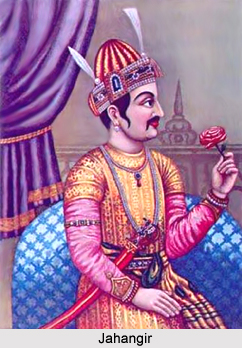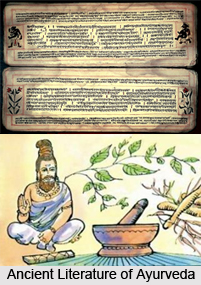 Unani medicine, introduced in India during the 7th century A.D. gained its significance during the rule of the Mughal Dynasty. The ancient medicine, a combination of Arabic medicine or Tibbi with Ionian-Greek medicine developed considerably under the patronage of the Mughal monarchs. Its growth commenced during the rule of Babur and was later passed down to his descendants.
Unani medicine, introduced in India during the 7th century A.D. gained its significance during the rule of the Mughal Dynasty. The ancient medicine, a combination of Arabic medicine or Tibbi with Ionian-Greek medicine developed considerably under the patronage of the Mughal monarchs. Its growth commenced during the rule of Babur and was later passed down to his descendants.
When Emperor Nur-ud-din Jahangir (1605-1627) ascended the Mughal throne, he issued his famous `Akham-e-dawazdhagana` (Twelve Ordinances), one of which instructs for the construction of hospitals and appointments of physicians to attend to the sick. All the expenses for the medical services were paid from the royal treasury. The emperor had a keen interest towards medicine. His Tuzuk-e-Jahangiri has many references to medical terms. He discussed about rabies and also stated that plague was caused by rats. He was also curious about the structure and functions of the body in different animals and carried out several experiments to unveil the truth. The emperor also wished to verify about the efficacy of Momiyai (bitumen) before taking it as a medicine. He also conducted an experiment to test its pharmacological effect.
Jahangir is said to have once carried out an experiment to compare the degree of pollution of the air of Mahmudabad to that of Ahmadabad. For that he ordered his men to hang one sheep on the bank of Kankariya Talab after taking off its skin and the other at Mahmudabad. This would enable him to discover the difference of the effect of the local air in the two regions. After almost seven hours the carcass of the sheep in Ahmadabad changed drastically and became putrid. It became difficult to go near it. However, the sheep hung at Mahmudabad in the morning, remained unchanged until the evening. It showed signs of deterioration only after one and a half night had passed. The experiment thus, proved that the water and air of Mahmudabad have no resemblance to those of Ahmadabad.
Jahangir effectively patronised the growth and development of medicine. He held has physicians in high esteem and offered them high positions in his court. Hakim Sadra and Hakim Humam were the two most renowned physicians of his court. Hakim Humam, the brother of Hakim Abul Fath studied medicine under Hakim Ali Gilani. Once, Jahangir became seriously ill due to his addiction to alcohol. No amount of treatment by the other local physicians could cure him. Finally Hakim Humam was called for who suggested the king to mix Philonium romanian in his drinks. Gradually the quantity was increased reducing the quantity of wine to the same degree. Ultimately the king was cured of his addiction to alcohol.
The king thus, for his enthusiastic approach towards medicine invited several physicians from different corners. Some of the renowned physicians in his court have been mentioned below:
Hakim Momina Shirazi
Hakim Momina Shirazi was one of the most noteworthy court physicians of Jahangir and Shah Jahan. He arrived in India in 1622 A. D. during the reign of Emperor Jahangir. He joined then imperial court in the last days of the ruler. The emperor once suffered from breathlessness. The Hakim then treated him successfully. After the death of Jahangir the Hakim served in the court of Shah Jahan where he was bestowed with honours and respect. In 1633 AD Shah Jahan sanctioned a large annual grant to him for his upkeep. He successfully treated several members of the royal family.
Hakim Sadra
Hakim Sadra, a native of Shiraz was the son of the famous physician, Hakim Fakhr al-Din Shirazi who lived in the days of Shah Tahmasp. He studied medicine with Hakim Muhammad Baqar, son of Hakim Imad al-Din Mahmud in Iran. Later when he arrived in India he learnt medicine under the leading physician Hakim Ali Gilani. His continuous study and practise helped him gain expertise in this field. He belonged to the Shiite sect of Islam. Besides being a physician he was also a renowned poet having composed verses under the nom-de plume of Masih Ilahi.
Once, Sadra was relegated the duty of taking care of prince Khusru, whose eyes were pierced with hot wire to deprive him of sight. His treatment helped the prince to gain back his vision in one eye but the other remained a little defective. Jahangir, contented with the performance of the Hakim, honoured him with the title of Masih-ul-Zaman (Messiah of the world). The Hakim also received royal favours during the reign of Shah Jahan, who appointed him as the spokesman of the Court. During the 4th year of accession, he went to Mecca and Medina for pilgrimage. After he returned on 1635 A.D., he settled down in Lahore resigning from his services in the court. However, he maintained his relations with the court. He went there whenever the emperor called for him. He treated the Shahzadi Jahanara of her severe burns in the 18th year of the accession of Shah Jahan (1644 AD). He died in Kashmir in 1651 A.D.
Hakim Rukna
Hakim Rukna was a native of Kashan in Iran. He arrived in India during the reign of Akbar. The hakim also served in the court of Jahangir and Shah Jahan. He was a distinguished physician as well as an excellent poet. He is reported to have composed more than 100,000 verses. Once, Jahangir travelled to Kashmir where he suffered from serious breathlessness. The hakim was immediately sent for from Agra for the treatment. Hakim Rukna earned further fame and popularity during the reign of Shah Jahan. He stayed in India upto 1632 A.D. when he sought the permission of the Emperor to pay a visit the shrine of Imam Rada in Mashhad. The king granted his wish and presented him a robe of honour before his departure. From Mashhad, he went to his native place, Kashan, where he died in 1656.
Hakim Ruhullah
Hakim Ruhullah was a resident of Bharuch in Gujarat. He was an expert physician and an excellent writer. First he was associated with the Mughal Emperor Akbar, Abdur Rahim Khan-i Khanan. Later he entered the court of Jahangir.
Hakim Fathullah Gilani
Hakim Fathullah Gilani, the son of Hakim Lutfullah Gilani was a notable physician. He followed the profession of his forefathers and attained expertise in the field of medicine. Besides this he also possessed high knowledge of astronomy. He arrived in India during the reign of Akbar and later attended on Jahangir in his court. Blessed with expertise and skills he commanded a good influence over the emperor and was regarded as an important courtier and physician in his royal court. The Hakim soon rose to a high rank.
An outstanding physician, Hakim Fathullah Gilani is credited with translating the Al-Qanun of Ibn Sina into Persian language. It was later published in India. One manuscript is still extant in India.
Abul Qasim
Abul Qasim, son of Hakim al-Mulk, also came to India to serve in the court of Jahangir (1605-1627) and Emperor Shah Jahan (1627-1658). He was bestowed with the title of Hakim al-Mulk. His grandson Mir Muhammad Hashim came to India from Gilan during the reign of Aurangzeb (1658-1707) and served as his personal physician. His second grandson, Mir Muhammed J afar also arrived in India during the reign of Muhammad Shah (1719-1748). He served as the court physician of the Maharaja of Jaipur.




















